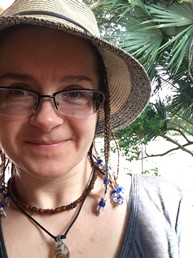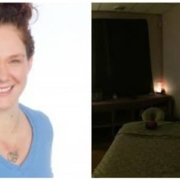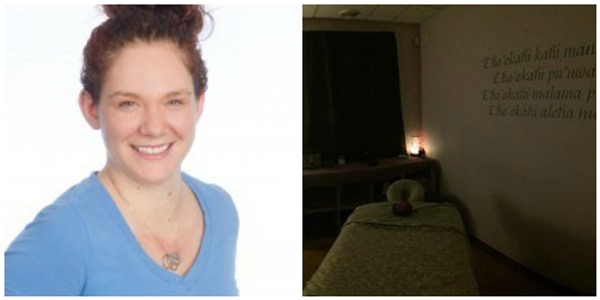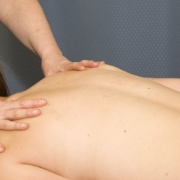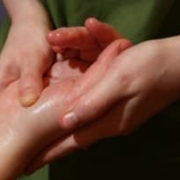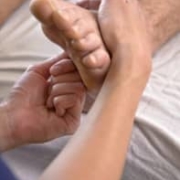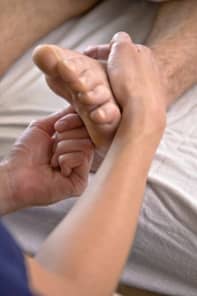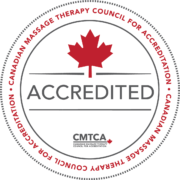It’s that time of year again—job search time! Every spring, second-year Vicars students look beyond their upcoming final exams and begin securing RMT positions in their communities. And those efforts pay off! Last year, 65% of our graduating students already had positions lined up when they graduated; a further 29% had secured a place within three months of finishing the program.
These fantastic results are thanks to our students’ diligence and proactive attitudes, and the Vicars reputation. Across Western Canada, employers know that Vicars therapists are some of the best in the biz.
To help this year’s graduating class achieve just as much success as previous alumni, we’ve put together some of our best advice on how to find a great job as an RMT. We had so much to say that we divided it into two posts.
Keep reading below for help choosing the right position for your needs, researching clinics, and finding job postings. Check back soon for our advice for the interview itself. Special thanks to Linda McGeachy in Calgary and Laura Finley and Adena Mai-Jardine in Edmonton for sharing their wisdom.
Massage therapy jobs are like massage therapists themselves; no two are exactly alike! Because they’re such great therapists, Vicars grads have their choice of the best jobs—but what’s best for one student might not suit another. So the first step to finding the perfect RMT position for you, is…
Step 1: Know Thyself
In order to find a clinic environment that meets your needs, you need to know what those needs are. Take a few moments (or hours, or days) for honest self-reflection. Think about your goals and passions, and your strengths and weakness, both personal and professional (it’s easy to forget how much those overlap).
Consider the following questions—it may even be useful to sit down and write out the answers for yourself.
- When I envision my perfect clinic environment, what does it look like? Why? What attracts me to it?
- Do I want to be self-employed (either completely on my own, or as a contractor in someone else’s clinic), or an employee?
- Which is a higher priority to me right now? Flexibility, income, type of massage I perform, or something else?
- What are my strengths as a massage therapist? What are my weaknesses? (Be honest! Your ideal workplace is somewhere that will take advantage of your strengths, and help support you in areas where you’re less confident).
- Do I want to do mostly relaxation, or mostly therapeutic massage?
- Are there particular conditions, populations, or techniques that really excite me?
- Do I want to work with other RMTs, other health practitioners, or even alone?
- How involved do I want to be in the business side of massage therapy? Am I comfortable being responsible for my own marketing, booking, etc?
- How far am I willing to commute for work?
- What days and hours am I willing to work?
Answering these questions will help you determine what type of position you should search for.
Speaking of which…
Step 2: Entrepreneur, Employee, or Contractor?
RMTs work in large and small massage clinics, wellness centres, spas, gyms, in their own homes… wherever they please, basically!
In addition to choosing your preferred working environment, you’ll also need to know whether you’d like to work for yourself (either starting your own business or as a self-employed contractor), or for someone else as an employee. There are advantages and disadvantages to both.
If the entrepreneurial life is for you, we recommend you go back to the business plan you completed in the fall. Assuming you took the time to craft a realistic plan (of course you did!), that assignment will be an enormous help to you now. In the past, Vicars grads have taken that completed assignment directly to the bank. We recommend that you review it to ensure that it’s still an accurate reflection of the business you’d like to start, and then you can get cracking!
(By the way, even if you don’t want to start your own business, it’s worth your time to review that assignment, as it may help you answer some of those questions from the previous section).
If you’d like to work in someone else’s business – be it a chiropractic office, massage clinic, or gym – decide whether you’d prefer to be a contractor, or an employee. As a contractor you will generally have more freedom, but also more responsibilities. An employee has less say in their hours, rates, etc, but will often have to do less on the business side.
So now you know the type of environment in which you’d like to work, and the role you’d prefer to play there. All you have to do now is find it…
Step 3: Looking for Openings
A great place to start is the school’s very own Facebook page. We get new job postings every week from clinics all over the province, and put them up there in chronological order. But don’t assume that just because a posting is a few weeks old, it’s no longer relevant. Because the massage industry is booming, and our alumni are mostly fully employed, many of those jobs won’t have been filled yet. Scroll through all the listings from the last few months, and see what catches your eye. Local listings in newspapers and online may also be useful.
But don’t be limited to job postings, especially if you’re outside one of the big cities – take the initiative, and you’ll be rewarded. Find a clinic that looks promising, and walk right in!
Search for clinics in your community (use Google Maps, the Yellow Pages, recommendations from friends, etc) that look like they might fit your parameters, and check them out. Check out their website, and look for reviews on sites like Yelp. Stop in to introduce yourself, and to get a general “feel” for the place.
If it still seems promising, we recommend booking a massage there, even before you’ve applied. You don’t have to share any more information than you feel comfortable with, but feel free to introduce yourself as a massage therapy student.
Once you’ve narrowed down your list, it’s time to start applying! We’ll discuss interviews and contracts in Part 2, but in the meantime I’ll leave you with two words: Cover Letter. Always include a cover letter as part of your application. No exceptions. It gives you a chance to introduce yourself and explain why they should consider you above other applicants, but it also shows that you’ve taken that little bit of extra effort.
Good luck, and check back soon for Part 2, Interviews and Contracts!

![]()



